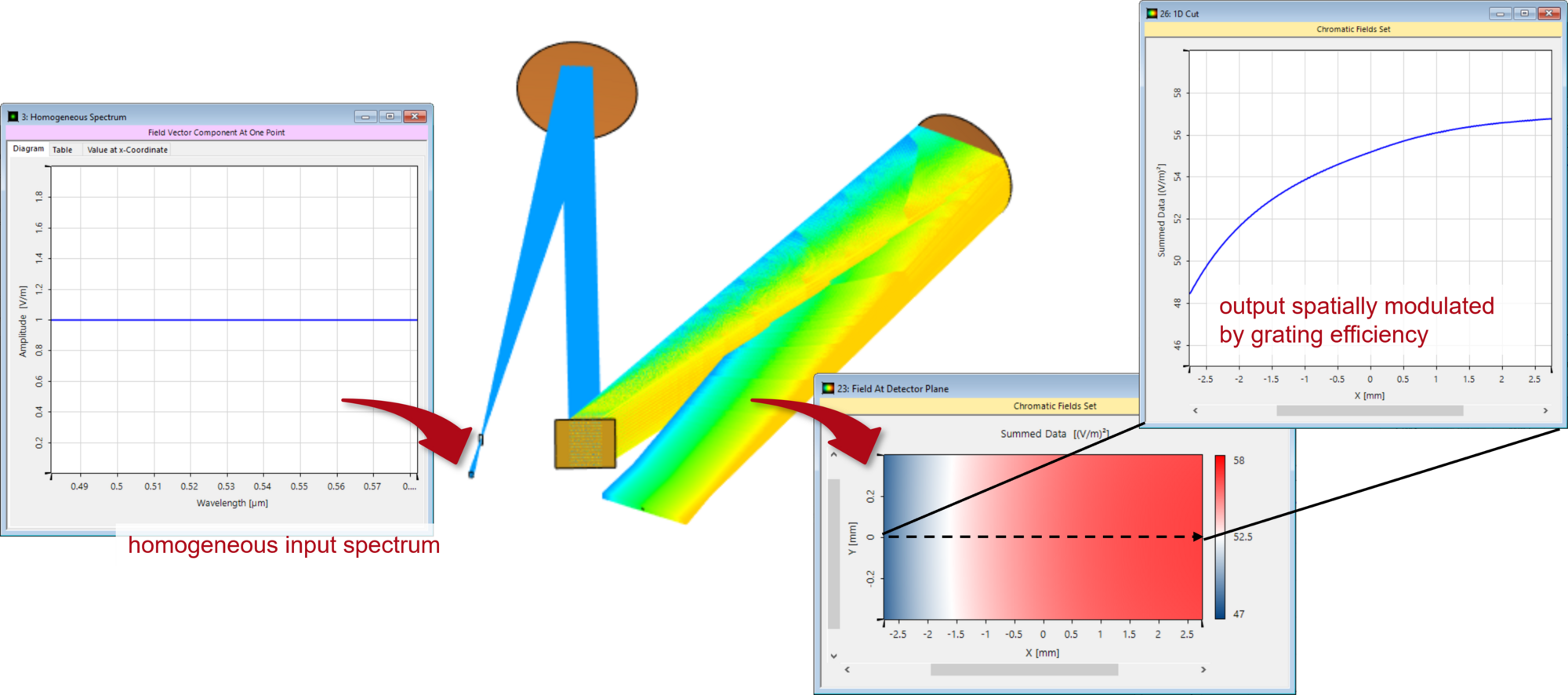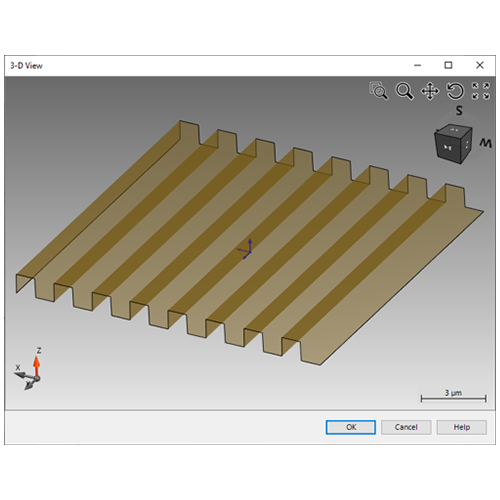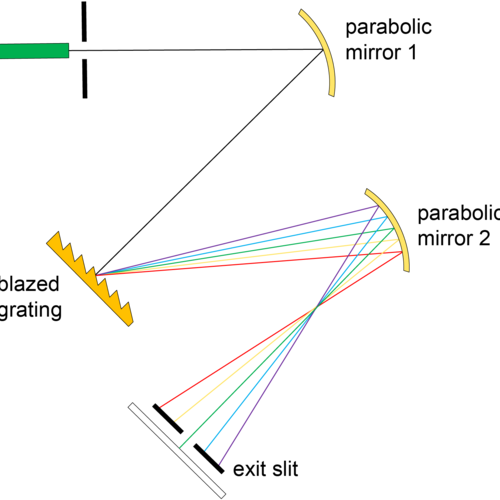Czerny-Turner Setup
Abstract
Czerny-Turner setups are widely used to measure the spectral information of light sources. Typically, a parabolic mirror is used to collimate the source first, and then a diffraction grating will spatially separate the wavelengths. A second mirror can be employed to refocus each of the now separate wavelength components. By positioning an exit aperture properly, a specific wavelength can be selected. A simulation of the complete Czerny-Turner setup, including real reflective mirrors and a diffractive grating is presented in this use case using, first, a continuous spectrum, and then the discrete example of the sodium doublet.
VirtualLab Fusion Configuration
-
 VirtualLab Fusion
VirtualLab Fusion
-
 Grating Package
Grating Package



